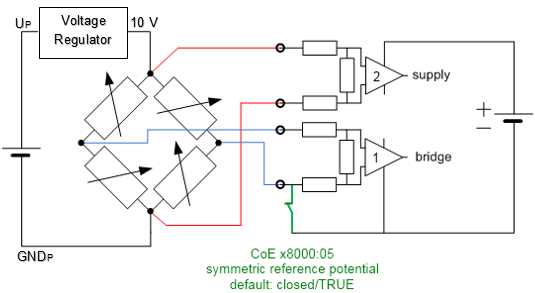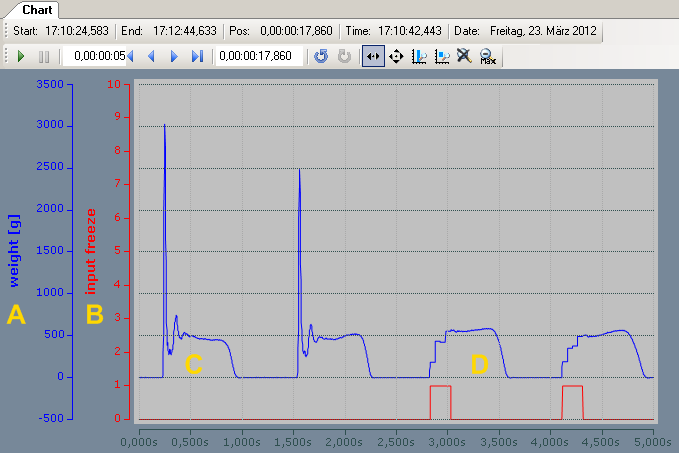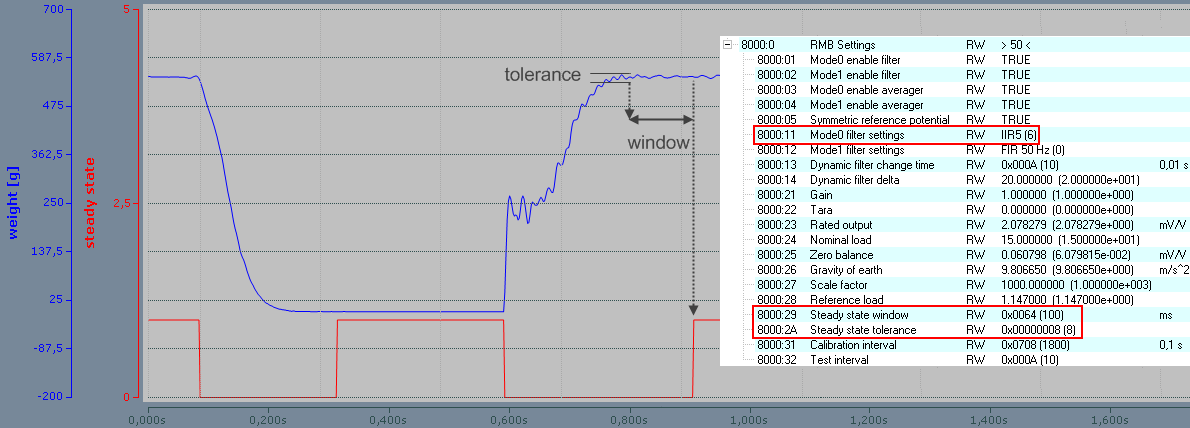Application notes
Symmetric reference potential
The EP3356-0022 measures the two voltages Usupply und Ubridge independently of each other. The measuring accuracy can be increased still further if an internal coupling is employed to prevent the internal measuring circuits from drifting apart. To this end the EP3356-0022 has an internal switch that is closed in the default state and establishes a potential reference between the internal electronics and the bridge point.

If several strain gauges are supplied by the same power supply and equalising currents flow that falsify the measurement, the switch can be opened via CoE 0x8000:05. Alternatively, electrically isolated strain gauge supplies are to be installed.
Open-circuit recognition
The EP3356-0022 has no express open-circuit recognition facility. If one of the bridge wires is broken, however, the voltage measured there generally moves towards the final value, thus displaying an error in the status word. Over/underrange of the supply voltage is likewise indicated.
Input freeze
If the box is placed in the freeze state by InputFreeze in the control word, no further analog measured values are relayed to the internal filter. This function is usable, for example, if a filling surge is expected from the application that would unnecessarily overdrive the filters due to the force load. This would result in a certain amount of time elapsing until the filter had settled again. The user himself must determine a sensible InputFreeze time for his filling procedure.
For clarification: temporal control of the InputFreeze and the decision regarding its use must be realised by the user in the PLC, they are not components of the EP3356-0022.
In the following example (recorded with Scope2) impulses on a 15 kg load cell are recorded; the filter is wide open at IIR1 so that steep edges occur in the signal.

Explanation: The weight (A) is shown in blue; the state of the InputFreeze variable, which can be controlled by the PLC program and can be TRUE/FALSE, is shown in red (B). The first two impulses (C) lead to large peak deflections in the signal. After that the following is activated in the PLC program (see example program):
- if the measured value for the last cycle (cycle time 100 µs) has changed by more than 10 g (indicating a sudden load), bInputFreeze is set to TRUE for 50 ms by a TOF block on the EP3356-0022.
The effect can be seen in (D): The peak load is no longer acknowledged by the EP3356-0022. If it is optimally adapted to the expected force impulse, the EP3356-0022 can measure the current load value without overshoot.
Gravity adaption
The calculation of the weight depends on the gravitation/the Earth's gravitational force/acceleration due to gravity at the place of installation of the scales. In general, acceleration due to the gravitational pull of the earth at the place of installation is not equal to the defined standard value of g = 9.80665 m/s². For example, 4 zones of acceleration due to gravity are defined in Germany, in which a local acceleration due to gravity of 9.807 m/s² to 9.813 m/s² is to be assumed. Hence, within Germany alone there is a clear dispersion of the order of parts per thousand for acceleration due to gravity, which has a direct effect on the measured weight in accordance with the equation FG = m*g.
If
- load cells are used in the theoretical calibration with characteristic values according to the sensor certificate
- calibration weights are used whose weight at the place of installation of the scales is by nature different to that at the place of origin
- scales of the accuracy class I to III are to be realized
- scales that are generally independent of acceleration due to gravity are to be realized
then one should check whether the gravity correction needs to be adapted via object 0x8000:26.
Idling recognition
Weighing is a dynamic procedure that can lead to large jumps in the bridge voltage and thus to the calculation of the value. Following a change in load, the measured value must first "settle" so that the process value is evaluable in the controller. The evaluation of the measured value and the decision over the degree of calmness can be done in the controller; however, the EP3356-0022 also offers this function, which is activated by default. The result is output in the status word.
- If the load value remains within a range of values y for longer than time x, then the SteadyState is activated in the StatusWord.
- SteadyState is set to FALSE as soon as this condition no longer applies.
- The parameters x and y can be specified in the CoE
- The evaluation is naturally considerably affected by the filter setting
In the following example (recorded with TwinCAT Scope2), a 15 kg load cell is abruptly unloaded and then loaded again with 547 g. SteadyState is subject to a window time from 100 ms and a tolerance of 8 g (15 kg nominal value, scaling 1000; see CoE).

Official calibration capability
"Official calibration" is a special kind of calibration that is accomplished according to special regulations with the involvement of trained personnel using prescribed aids. The use of "officially calibrated" scales is mandatory in the Central European region, in particular for the filling of foodstuffs. This ensures the correctness of the weighed quantities in a particular way.
The EP3356-0022 cannot be officially calibrated as individual device. However, it can be integrated as element in applications that can then be equipped by the integrator with the required characteristics for official calibration capability using appropriate means.